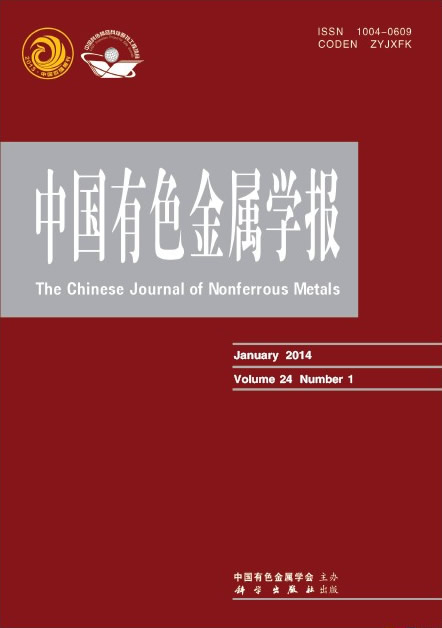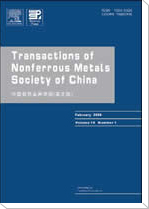的时效分解及对电阻率的影响
( 1. 西安交通大学 理学院, 西安 710049;
2. 西安交通大学 金属材料强度国家重点实验室, 西安 710049)
摘 要: 用熔体快淬法制备了Cu100-xCrx(x=2~35)合金带。研究表明:熔体快淬带的组织由Cr在Cu中的过饱和固溶体、富Cr溶质偏聚区、富Cr液相分解粒子组成;含Cr量增加,液相分解粒子体积分数增加,电阻率提高;过饱和固溶体在等温时效过程中短时间内(10 min)快速分解完毕,合金带的电阻率大幅下降,延长时效时间,富Cr沉淀相尺寸长大缓慢;时效温度升高,富Cr沉淀的尺寸略有增大,电阻率在600 ℃时效达到最小值。
关键字: Cu-Cr合金; 熔体快淬; 时效; 微观组织; 电阻率
Cu100-xCrx ribbons
( 1. School of Science, Xi′an Jiaotong University, Xi′an 710049, China;
2. State Key Laboratory for Mechanical Behavior of Materials,
Xi′an Jiaotong University, Xi′an 710049, China)
Abstract: Cu100-xCrx(x=2-35)ribbons were prepared by melt spinning. The results reveal that the microstructures of the ribbons are consisted of supersaturation solid solution of Cr in Cu solution, Cr-riched segregation regions and Cr-riched liquid phase separation particles. The volume fractions of Cr-riched liquid phase separation particles and the resistivity of the ribbons increase with the increasing Cr contents. The supersaturation is solid solution separated rapidly in isothermal annealing within 10 min, resulting in the decline of resistivity. The Cr-riched precipitations grow slowly as the annealing time is prolonged, however they will grow up slightly when the ribbons are annealed at higher temperature. The least resistivity can be obtained when the ribbons are annealed at 600 ℃.
Key words: Cu-Cr alloy; melt-spun; aging; microstructure; resistivity


